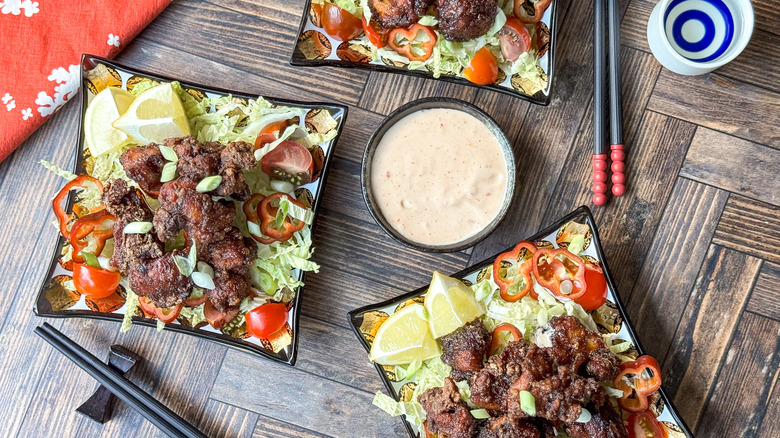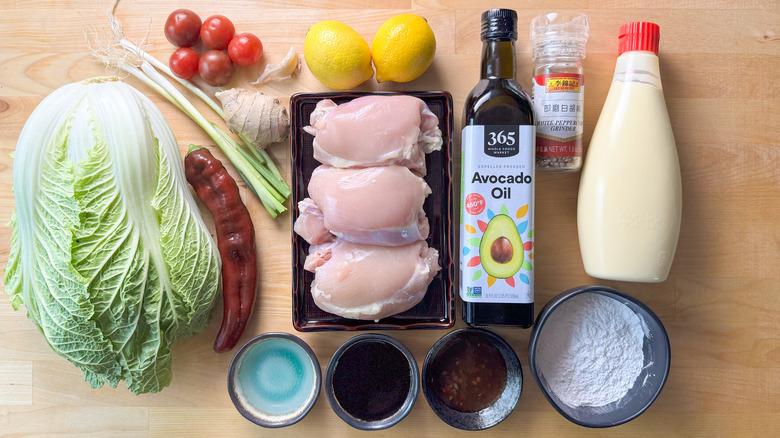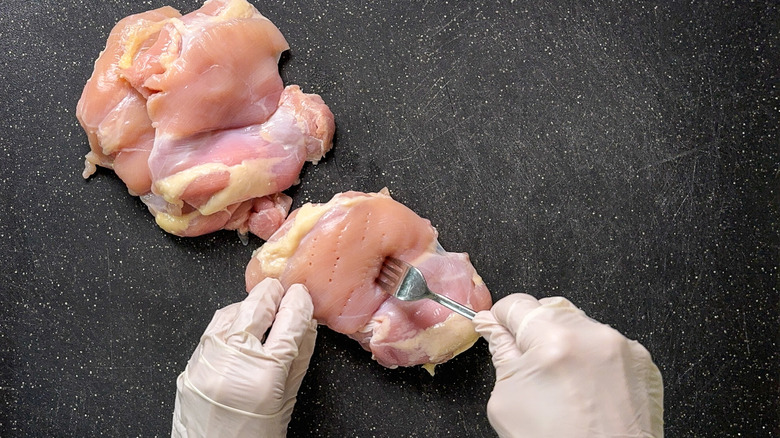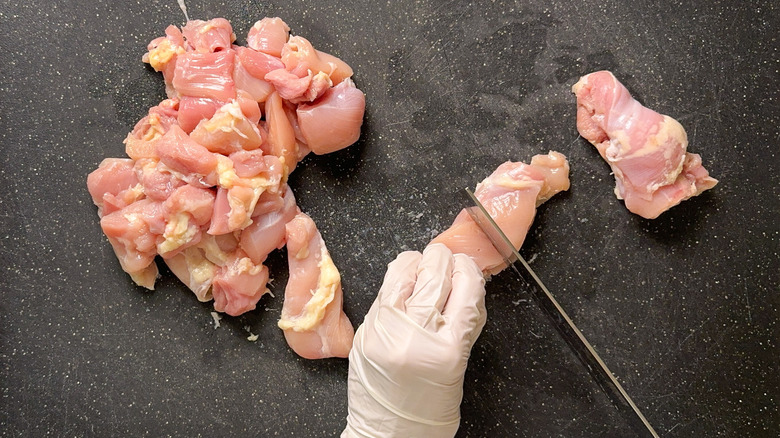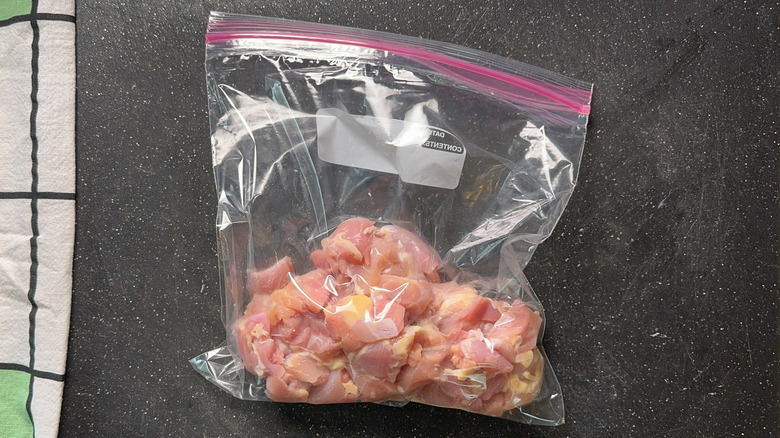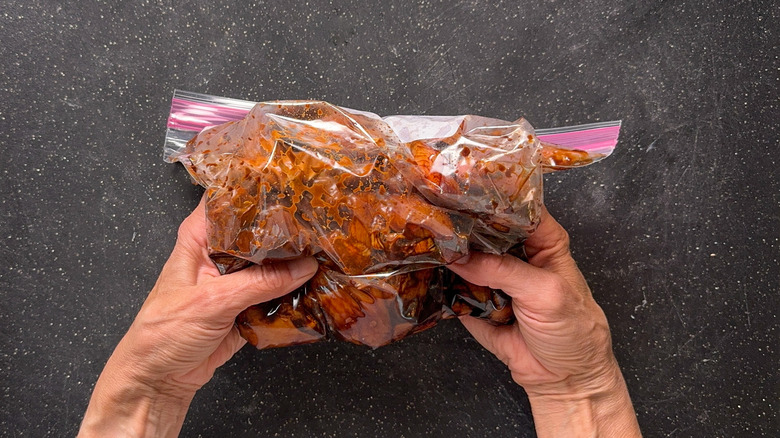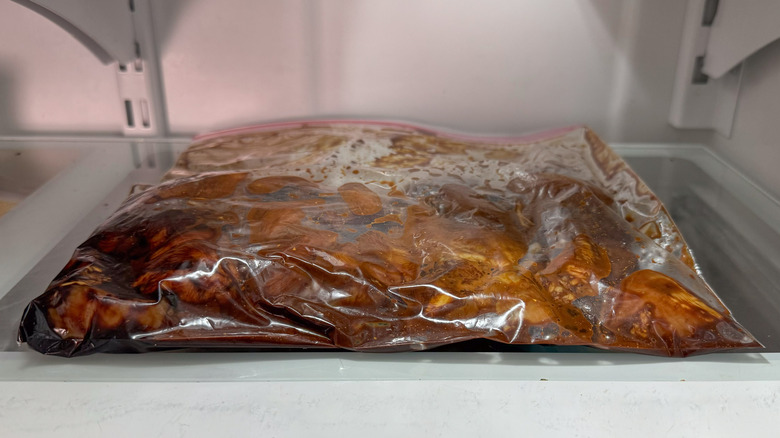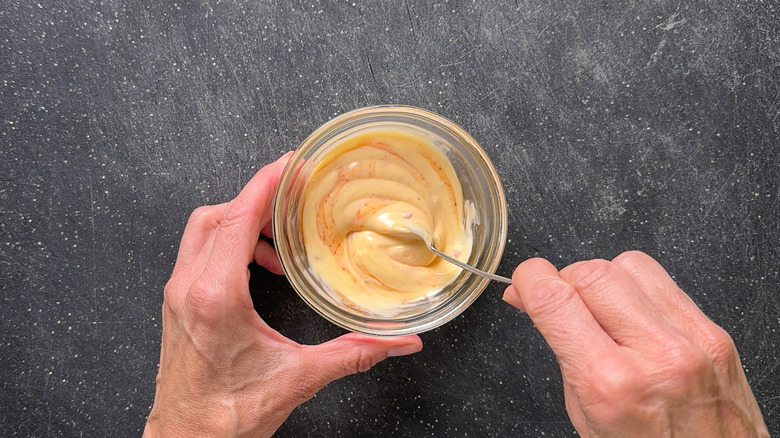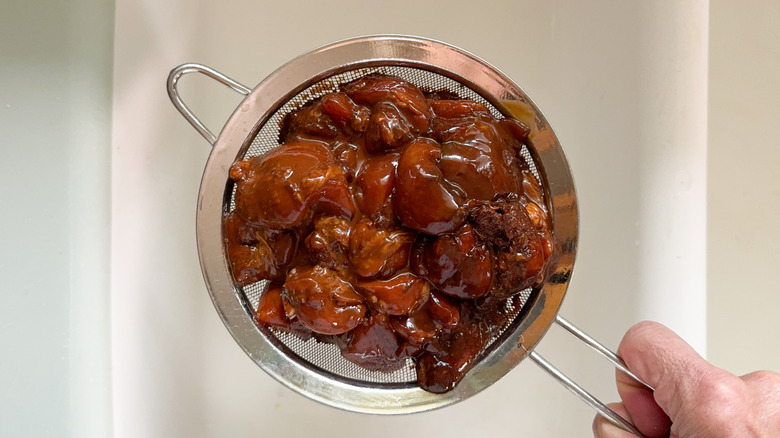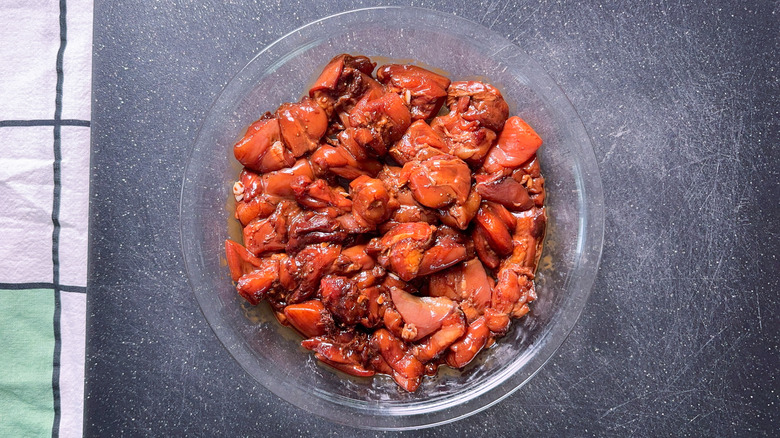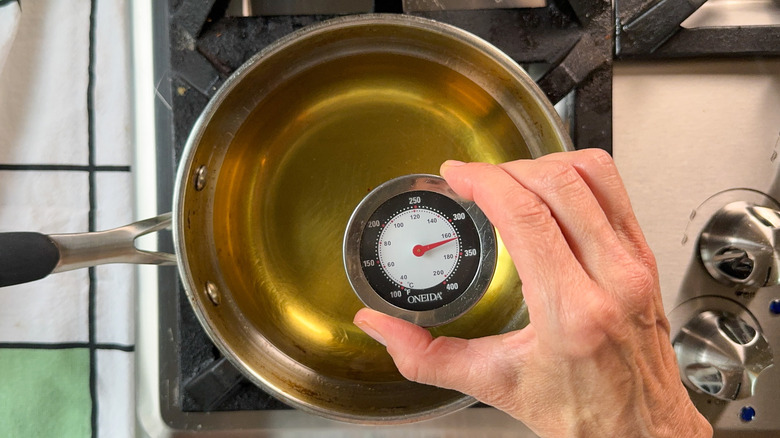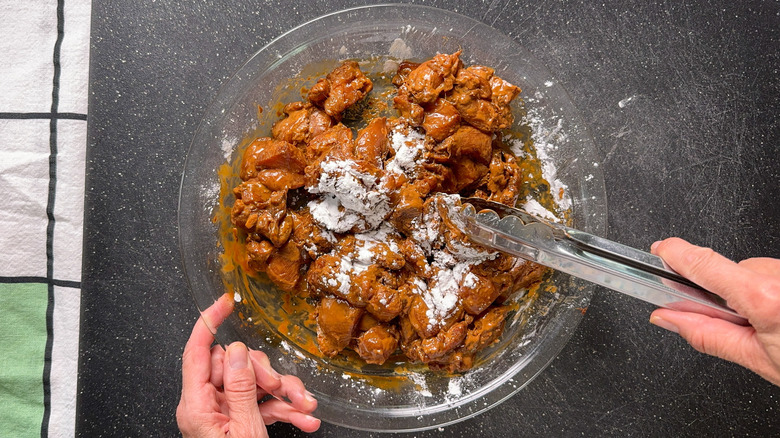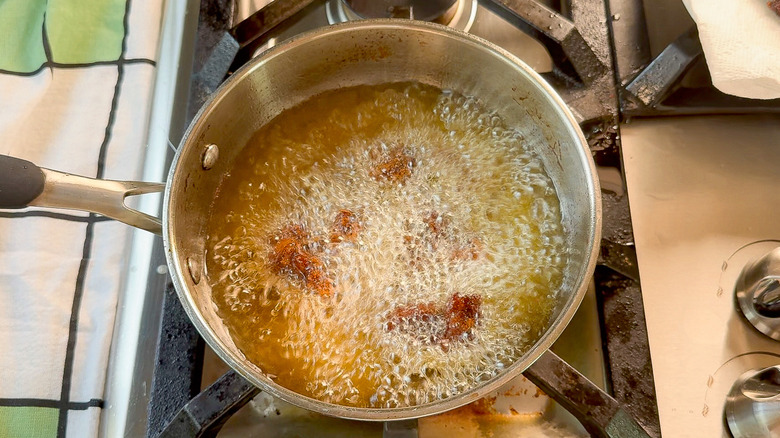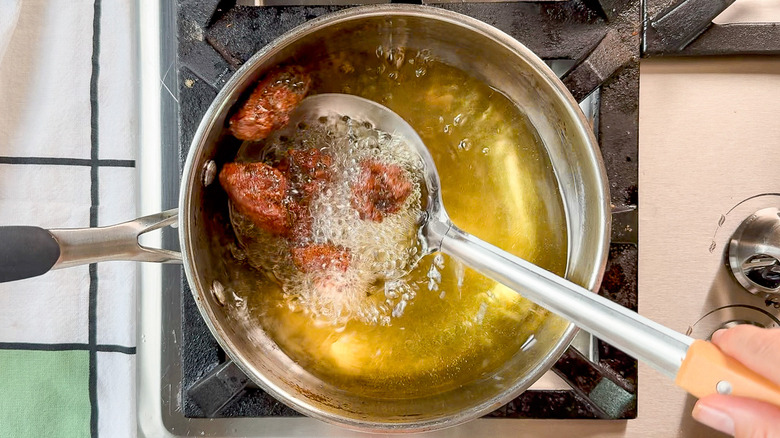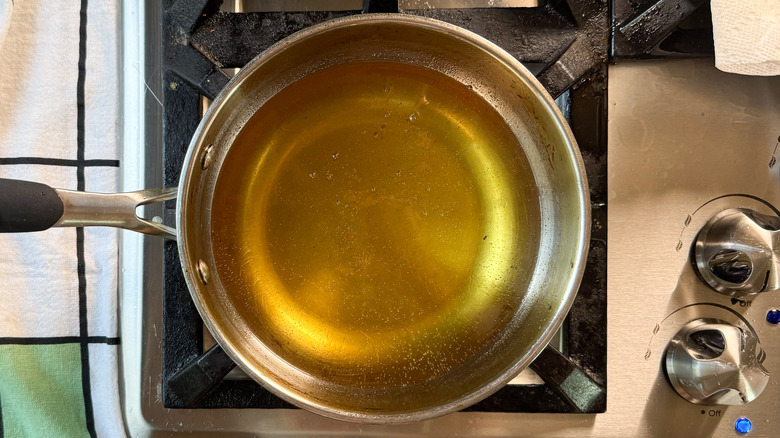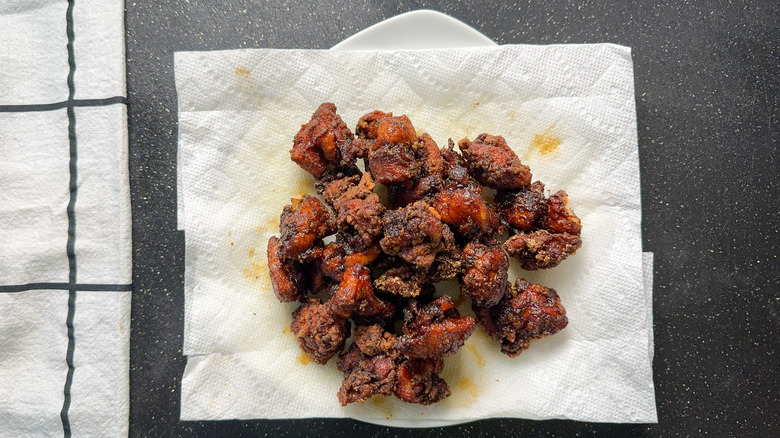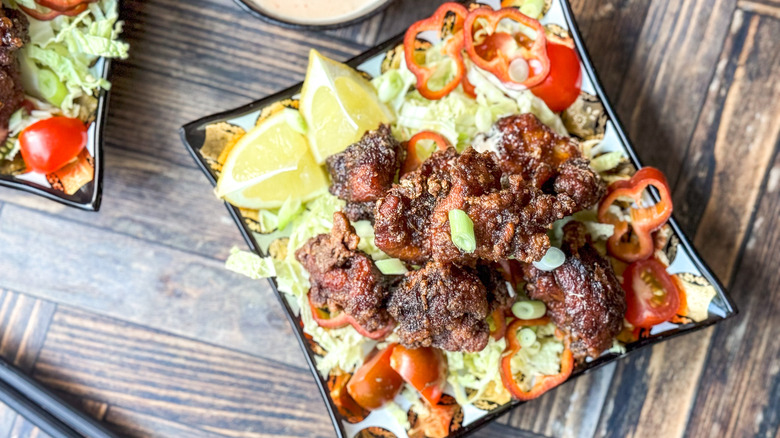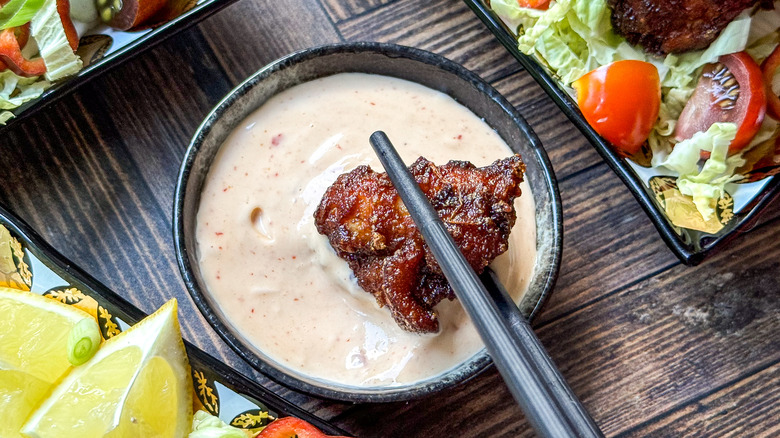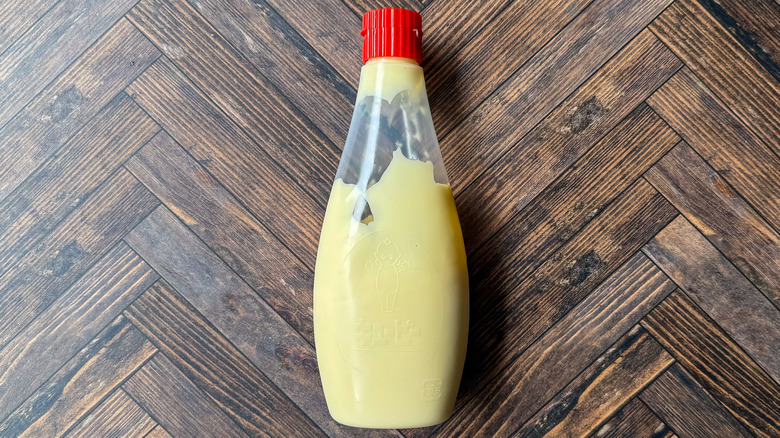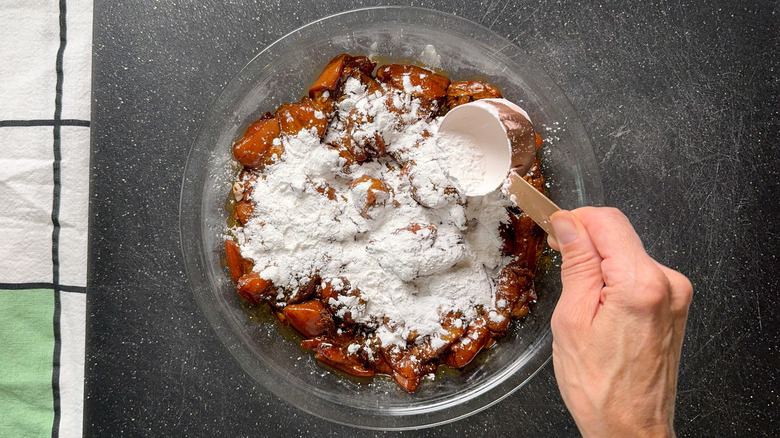Japanese Twice-Fried Chicken (Karaage) Recipe
There is fried chicken, and then there is karaage-style fried chicken. Karaage is a Japanese term that loosely translates to "frying without a batter." This can refer to any sort of protein, but karaage fried chicken has gained popularity outside of Japan as one of the most beloved and unique dishes. Karaage chicken involves an initial marination of the chicken followed by dredging with starch and then frying to achieve a super crispy texture. This recipe for Japanese twice-fried chicken Karaage – courtesy of recipe developer Julie Kinnaird — uses a double frying technique (also used to make Korean fried chicken) to produce a superior crispy texture while keeping the inside moist and tender.
The soy-sake-ginger-marinated chicken is cut into bite-sized pieces and then dredged with pure potato starch. The initial frying is done at a lower temperature, which seals in the juices and forms the crust. The chicken then briefly rests, allowing the meat to keep cooking on the inside while preventing the exterior from becoming overdone. The second cook is more of a "flash fry" at a higher oil temperature with the intent of making the crust extra crispy without overcooking the meat. The result is crunchy and light, and packed with savory umami flavor. Finish off this chicken with a quick salad of fresh veggies, some lemon wedges for a touch of acidity, and a creamy Kewpie mayo and chili dipping sauce and you'll have the ultimate fried chicken experience.
Gather the Japanese twice-fried chicken karaage ingredients
This recipe uses boneless, skinless chicken thighs because they stay juicy and tender and don't need the skin for crisping up. Piercing the thighs with a fork before cutting up and marinating allows extra passageways into the meat for the marinade. To make the extra-flavorful karaage marinade, Kinnaird uses dark soy sauce for an intense flavor, a good quality sake, freshly grated ginger, minced garlic, ground white pepper, and a bit of Japanese Kewpie mayo. The secret with the mayo is that it also helps tenderize the meat and seal in juices. If you don't have dark soy sauce, a lighter variety will also work. Pure potato starch is used for coating the chicken and avocado or another vegetable oil with a high smoke point is used for frying. More Kewpie mayo is mixed with either sweet or spicy chili sauce (your choice) to make a dipping sauce or use as a dressing over a salad of shredded Napa cabbage, cherry tomatoes, and sliced sweet peppers such as Anaheim or banana varieties. Fresh lemon wedges are delicious to squeeze over the just-fried karaage chicken and add a bit of acid to offset the richness. Finish it all off with some thinly sliced scallions as a garnish.
Step 1: Pierce the chicken with a fork
Place the chicken on a cutting board and pierce it all over with a fork to allow the marinade to penetrate.
Step 2: Cut the chicken
Cut the chicken into bite-sized pieces.
Step 3: Place the chicken in a bag
Transfer the chicken to a plastic bag.
Step 4: Add the marinade ingredients
Add the soy sauce, sake, 1 tablespoon mayo, ginger, garlic, and white pepper. Seal the bag and massage gently to evenly coat the chicken.
Step 5: Refrigerate the chicken
Place the chicken in the refrigerator for at least 30 minutes and up to 4 hours.
Step 6: Make the mayo dipping sauce
While the chicken marinates, mix together the remaining ½ cup of mayo with the chili sauce, then chill until ready to serve.
Step 7: Drain the chicken
Drain the excess marinade from the chicken.
Step 8: Transfer the chicken to a shallow dish
Transfer the chicken to a shallow dish and blot it with a paper towel to remove excess liquid.
Step 9: Heat the oil
Heat the oil in a heavy medium-sized pot until it reaches 325 F.
Step 10: Dredge the chicken with the potato starch
Meanwhile, dredge the chicken with the potato starch, making sure that each piece is coated.
Step 11: Fry the chicken in batches
Once the oil is hot, cook the chicken in batches for about 2 minutes.
Step 12: Rest the chicken
Remove the chicken with a heat-proof slotted spoon to a plate lined with paper towels, repeating until all of the chicken has been fried. Let rest for 5 minutes.
Step 13: Increase the oil temperature
Heat the oil to 375 F.
Step 14: Fry the chicken a second time
Fry the chicken in batches a second time for about 30 seconds until deep brown and crispy. Transfer to a clean batch of paper towels.
Step 15: Plate the chicken
Fill shallow bowls with some of the cabbage, tomatoes, and pepper slices and top with the hot karaage chicken and garnish with the sliced scallions and lemon wedges.
Step 16: Serve with the mayo dipping sauce
Serve with mayo sauce for dipping.
Japanese Twice-Fried Chicken (Karaage) Recipe
Chicken is marinated in soy, sake, and ginger, and then double fried till perfectly tender and ultra crispy in this Japanese karaage chicken recipe.
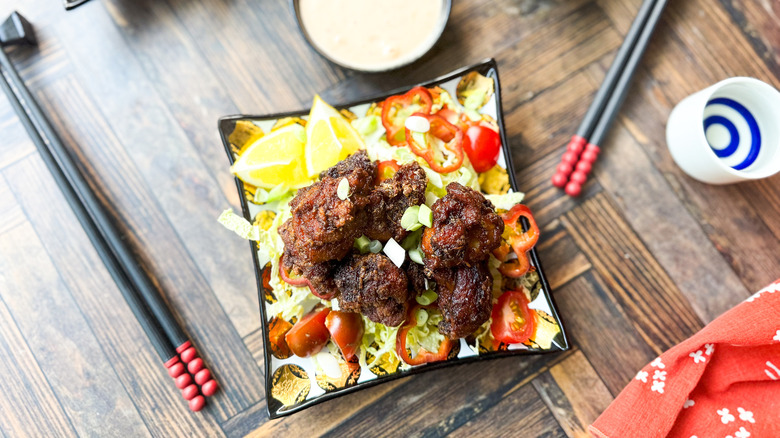
Ingredients
- 1 ½ pounds boneless, skinless chicken thighs
- 2 tablespoons dark soy sauce
- 2 tablespoons sake
- ½ cup plus 1 tablespoon Kewpie mayo, divided
- 1 tablespoon grated fresh ginger
- 1 large clove minced fresh garlic
- ¼ teaspoon ground white pepper
- 3 tablespoons sweet or spicy chili sauce
- 2 cups avocado, peanut, or other vegetable oil with a high smoke point
- ½ cup potato starch
- 2 cups shredded Napa or other cabbage
- ½ cup cherry tomatoes, halved or quartered
- 1 long sweet pepper (such as Anaheim or banana), thinly sliced into rounds
- 3 scallions, trimmed and thinly sliced
- 2 small lemons, cut into wedges
Directions
- Place the chicken on a cutting board and pierce it all over with a fork to allow the marinade to penetrate.
- Cut the chicken into bite-sized pieces.
- Transfer the chicken to a plastic bag.
- Add the soy sauce, sake, 1 tablespoon mayo, ginger, garlic, and white pepper. Seal the bag and massage gently to evenly coat the chicken.
- Place the chicken in the refrigerator for at least 30 minutes and up to 4 hours.
- While the chicken marinates, mix together the remaining ½ cup of mayo with the chili sauce, then chill until ready to serve.
- Drain the excess marinade from the chicken.
- Transfer the chicken to a shallow dish and blot it with a paper towel to remove excess liquid.
- Heat the oil in a heavy medium-sized pot until it reaches 325 F.
- Meanwhile, dredge the chicken with the potato starch, making sure that each piece is coated.
- Once the oil is hot, cook the chicken in batches for about 2 minutes.
- Remove the chicken with a heat-proof slotted spoon to a plate lined with paper towels, repeating until all of the chicken has been fried. Let rest for 5 minutes.
- Heat the oil to 375 F.
- Fry the chicken in batches a second time for about 30 seconds until deep brown and crispy. Transfer to a clean batch of paper towels.
- Fill shallow bowls with some of the cabbage, tomatoes, and pepper slices and top with the hot karaage chicken and garnish with the sliced scallions and lemon wedges.
- Serve with mayo sauce for dipping.
Nutrition
| Calories per Serving | 1,070 |
| Total Fat | 90.6 g |
| Saturated Fat | 9.5 g |
| Trans Fat | 0.5 g |
| Cholesterol | 172.6 mg |
| Total Carbohydrates | 27.6 g |
| Dietary Fiber | 3.8 g |
| Total Sugars | 6.1 g |
| Sodium | 974.3 mg |
| Protein | 36.3 g |
What is Kewpie mayo?
Kewpie mayo is an ultra creamy and rich Japanese mayonnaise that has been around since 1925. Toichiro Nakashima formulated the product after discovering the popularity of mayonnaise in the U.S. and was inspired to produce a "healthier version" by using twice the amount of yolks and zero sugar. The original recipe also contains a mix of rice, red wine, and apple cider vinegar, which not only helps to emulsify the product but gives it a tanginess that American-made mayo often lacks. Vinegar also helps to lower the pH of the mayo, making it more stable at room temperature.
The Kewpie mayo bottle not only has a kitschy cuteness about it with the Kewpie doll image, but is ultra-functional as it pushes out excess oxygen to prevent bacteria from forming inside. The red tip of the bottle has a unique star shape for piping out just the right amount of mayo in a decorative fashion. Design elements aside, it is the light yet custardy texture of the mayo and tangy umami flavor that keeps people coming back for more.
Are there any substitutions for potato starch?
Potato starch is extracted in liquid form from raw potatoes and dried, resulting in a fine powder, which can be used as a thickener or as a perfect coating for achieving crispy fried foods. Kinnaird prefers to use 100 % potato starch in her recipe, as it clings nicely to the meat and holds up well during the double frying, but she says there are alternative ingredients to achieve similar results.
If you don't have or can't find potato starch, corn starch may also be used in an equal amount. Cornstarch tends to have finer particles than potato, so the resulting texture will have slightly less crunch once fried. Wheat flour (or especially fine cake flour) is also traditionally used for karaage preparations. The wheat flour crust will have a nice nutty umami flavor (potato and corn starches are quite flavorless), but the downside is that the crust tends to be softer after frying. You can also try using a mix of 50 % wheat flour with 50 % potato or corn starch.
